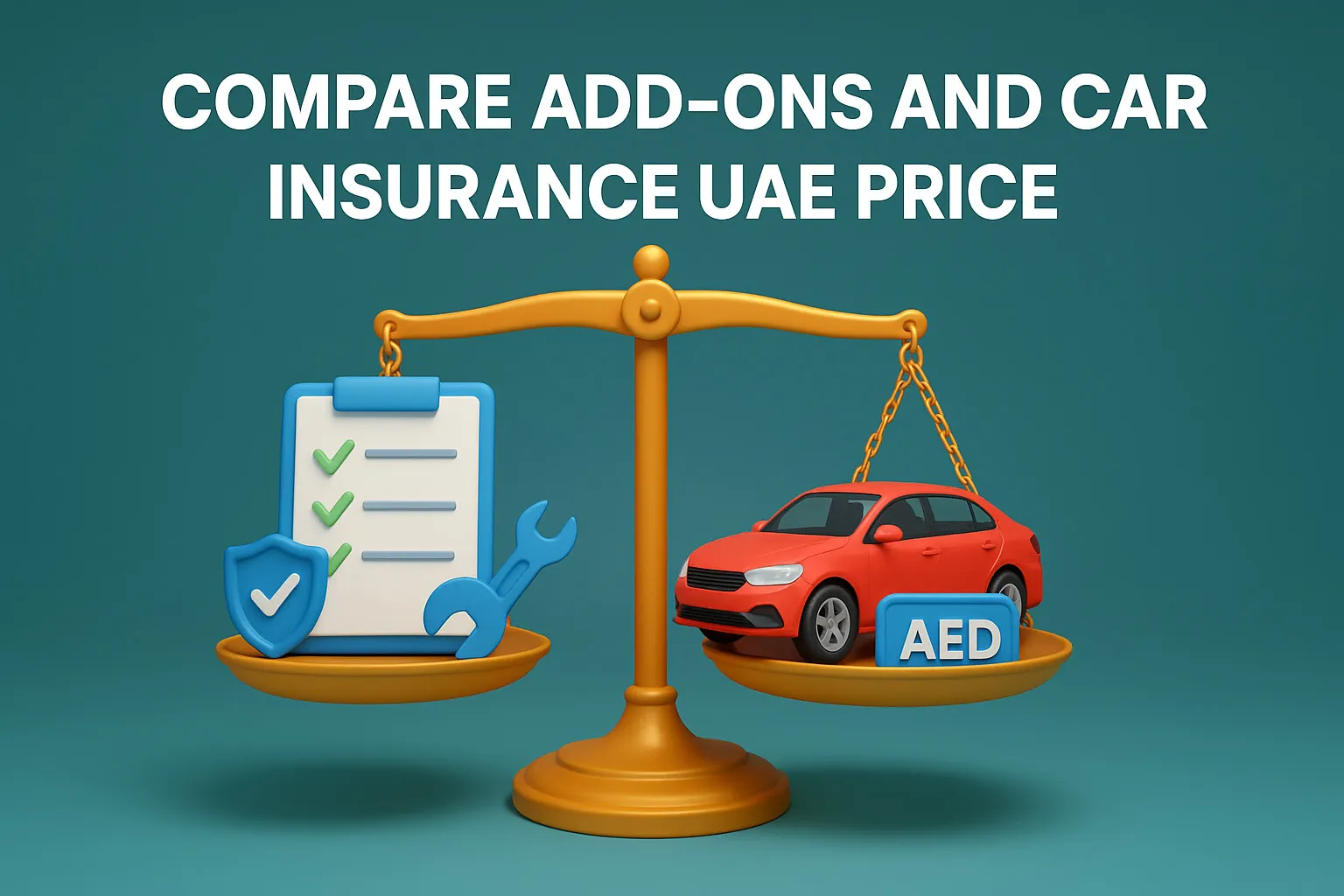Imagine driving along Sheikh Zayed Road with the Burj Khalifa shining in the distance, desert sand on one side, and the blue waters of the Arabian Gulf on the other. The UAE offers a special driving experience, combining modern highways with stunning scenery. But before you start your journey, it’s important to learn the rules of the road in this unique country. Knowing the local traffic laws and driving rules will help make your trip more smooth and enjoyable whether you live here or are just visiting.
Whether you are an expat, tourist or a resident, driving in the UAE has never been made so simple. Continue reading to find out why!
Introduction To Driving in the UAE
In the UAE, people drive on the right side of the road, meaning the driver’s seat is on the left side of the car. On a dual-carriageway, you’ll be driving on the right side of the road.
The roads are modern and well-maintained, and the driving style is often fast and confident—sometimes even a bit aggressive. In the cities, you might experience fast-paced driving or, during rush hour, heavy traffic jams. In residential areas, you could come across goats or chickens slowing you down. Outside the cities, you’ll deal with desert conditions, which might include sand dunes or camels on the road.
The upside is that fuel is inexpensive.
Almost everyone in the UAE owns a car or has a driver. While public transport is available, the most convenient way to get around is by car, especially if you don’t live or work in the city centre. According to the Roads and Transport Authority (RTA), there are about 540 cars for every 1,000 people in the UAE.
The RTA is responsible for managing roads, vehicles, and public transportation across the country.
Who is allowed to drive in the UAE?
You must be at least 18 years old to drive in the UAE and 21 years old to rent a car. Tourists can rent and drive a car using either:
- Their home country’s driving license, depending on where they are from
- Or an International Driving License, as long as their visa is valid.
How to Get a Drivers License in the UAE?
Getting a driver’s license in the UAE has a few steps, which can differ in each emirate. Here’s a simple guide on how to get a driver’s license in the UAE:
- Check If You Can Apply: You must be 18 and have a UAE residence visa.
- Sign Up at a Driving School: Choose a driving school and give them your passport copy, visa, Emirates ID, eye test report any other documents they need.
- Take Classes: If you’re new to driving, you must take several lessons.
- Pass Tests: You’ll have to pass a theory test on a computer, a yard test for parking and other skills, and finally, a road test where an inspector watches you drive on the road.
- Get Your License: If you pass the road test, you can pay the fee and get your license.
Driving in the UAE as a Expat
International residents in the UAE must quickly get a temporary driving license for their emirate. After that, they can either swap their home country’s license for a local one or start the process to get a local license from scratch.
Licenses from certain countries, like those in the Gulf region, European Union, Australia, Canada, Japan, South Korea, New Zealand, South Africa, Switzerland, Türkiye, the UK, and the US, can be easily exchanged.
To exchange your license, you’ll need to go to the local RTA office with these documents:
- Your original driving license with an Arabic translation
- A no-objection certificate from your employer
- A recent eye test result
- Your UAE ID card
- Your residence visa
- Passport photos
You can pick up your new local license in about an hour. Each emirate has slightly different steps. For example, in Dubai, the exchange costs AED 410.
The process is more complicated if your license is from a country not on the list. You’ll need to take driving lessons and tests, starting from the beginning.
Once you get your new driving license from any emirate’s RTA, you can drive anywhere in the UAE and the GCC states. The license is the size of a credit card and includes your photo, full name, nationality, the dates it’s valid, and the type of vehicle you’re allowed to drive. How long your license is valid depends on your original license and the length of your residence permit, but renewing it is easy.
Driving in UAE as a Tourist
Tourists with international driving licenses can drive in the UAE, but the license must be from their home country and is valid for one year. If you stay longer than a year, transferring your current license or getting a UAE driving license is recommended. Visitors from GCC countries can drive with their home country’s license without additional requirements.
If you’re from an approved country and plan to stay longer in the UAE, you can convert your home country’s license into a UAE driving license. You can convert it without taking a driving test or attending a driving school. These countries include:
| Australia | Austria | Bahrain | Belgium |
| Canada | Denmark | Finland | France |
| Germany | Greece | Ireland | Italy |
| Japan | Kuwait | Netherlands | New Zealand |
| Norway | Oman | Poland | Portugal |
| Qatar | Romania | Saudi Arabia | South Africa |
| South Korea | Spain | Sweden | Switzerland |
| Turkey | UK | USA |
But, there are some special rules for a few countries. People from Canada, Cyprus, Greece, Japan, Poland, South Korea, and Turkey must get their driver’s licenses translated by their consulates. Also, Canadians need a letter from their consulate in Dubai confirming that their driver’s license is real before they can swap it.
To exchange your driver’s license, you need:
- Your passport and a copy, with a valid residence permit
- A copy of your residence permit
- Your current driver’s license and a copy
- A translated driver’s license (for the countries mentioned)
- A letter from your consulate (for Canadians)
- One passport photo
- An eye test certificate
Note: These are the basic requirements; please check beforehand.
Drivers with Disabilities in UAE
In the UAE, people with disabilities are referred to as “people of determination.” If you’re looking for in-depth information, using this term will help you find out about transportation facilities in the UAE.
People with disabilities can drive in the UAE if they already have a driving license. They can take special driving lessons to get a local license if they don’t.
Car dealers offer vehicles adapted for various disabilities. Drivers can also register for a pass that gives them free access through SALIK toll gates, preferred parking, and free public transport.
For more details, you can visit the RTA website.
Driving Rules in UAE
The UAE has strict traffic laws to keep everyone safe on the roads. Knowing these rules can help avoid fines or legal trouble.
- Speed Limits: Speed limits vary depending on the road. On highways, they usually range from 100 to 160 km/h, while in city areas, they are between 40 and 80 km/h. Always follow the speed limits posted on signs.
- Seat Belts: Everyone inside the car must wear seat belts.
- Mobile Phones: You are not allowed to use a mobile while driving without a hands-free system. You can be fined for this.
- Drunk Driving: The UAE does not allow any alcohol when driving. Even a small amount can lead to serious penalties, including jail time.
- Traffic Fines: Breaking traffic rules can lead to heavy fines, black points on your license, or even having your vehicle taken away.
Navigating UAE Roads
The UAE has a good road system with clear signs, so getting around is generally easy. However, it is important to know local driving habits and road conditions.
- Road Signs: Road signs are in both Arabic and English. Learning the main symbols and what they mean is a good idea.
- Toll Gates (Salik): Some roads, especially in Dubai, have toll gates called Salik. You’ll need a Salik tag on your vehicle with enough balance to pass through.
- Roundabouts: Roundabouts are common in the UAE. Always give way to cars already in the roundabout and use your indicators when you’re exiting.
Vehicle Safety and Maintenance
Keeping your car in good condition is important for safe driving, especially with the UAE’s extreme weather.
- Regular Maintenance: Regularly check your car’s oil, brakes, and tyres.
- Tire Safety: Check tire pressure often, especially in the summer, as heat can cause tires to burst.
- Emergency Kit: Keeping an emergency kit in your car is always good. It should have a first aid kit, flashlight, spare tire, and basic tools.
Driving in Different Conditions
The UAE’s weather can change a lot, so adjusting your driving to match the conditions is important.
- Driving in the Desert: If you’re driving in the desert, make sure your car has a four-wheel drive. Lower your tyre pressure slightly for better grip on the sand, and always travel with others for safety.
- Driving in Fog: Fog is common in the winter. Drive slowly, use fog lights, and keep a safe distance from the car in front of you.
- Driving in Rain: Rain is rare but can make roads slippery. Slow down, avoid sudden braking, and be careful around waterlogged areas.
Traffic Information in the UAE
The UAE has good roads, but there are a lot of cars, so traffic can get bad, especially during rush hour. Some busy areas include Sheikh Zayed Road and Al Barsha in Dubai, Salam Street in Abu Dhabi, and the road between Dubai and Sharjah. Try to avoid driving during school drop-off and pick-up times. Also, check for any road works in your area.
Here are some apps that can help you with real-time traffic information:
- Here We Go: Provides directions and compares public transport options.
- Waze: Alerts you to speed traps.
- UAE Traffic: Gives traffic updates.
Keeping the radio on is also good, as they often provide traffic updates.
Reminder Of The Tips You Must Follow While Driving in the UAE
Here are the tips that you should follow while driving in the UAE:
- Always remember, there is zero tolerance for drunk driving.
- Avoid swearing or using hand gestures while driving.
- Drive confidently, but be prepared for unusual things, like a camel on the road, a lawnmower going the wrong way, or people reversing in a roundabout—these are just part of the driving experience.
- During Ramadan, especially during Iftar time, people drive quickly to get home. It’s best to avoid driving during this time if you can.
- Don’t slow down to look at accidents (rubbernecking). It’s illegal and causes big traffic delays.
Final Takeaway:
Driving in the UAE is a special experience, mixing modern roads with stunning views. Whether you live here or are just visiting, it’s important to know and follow the local driving rules to stay safe and have a good time. From driving in busy cities to exploring desert roads, being ready and aware of the rules will help you avoid any fines and stay safe. Drive with confidence, stay alert to the challenges, and enjoy the adventure of driving in the UAE.
As you start your journey, it’s important to keep track of your traffic fines—make sure you know the easiest ways to pay them. It’s also a good idea to review the key traffic rules to stay within the law. If you ever get black points on your license, knowing how to remove them can help keep your record clear. Safe driving is about being ready and informed. Safe travels!
Frequently Asked Questions (FAQs):
Q. Is driving in the UAE difficult?
Some local drivers may speed, follow too closely, drive in the wrong lanes, or change lanes suddenly. However, you shouldn’t copy them. There are speed cameras everywhere. If a driver behind you flashes their lights, they want you to move out of the way.
Q. Can tourists drive in UAE?
Yes, tourists can drive in the UAE. They need an international driving permit and valid vehicle insurance. Residents of GCC countries can drive in the UAE using their driving license from their home country.
Q. How long is UAE driving valid?
UAE and GCC citizens can renew their driving licenses for 10 years, while residents can renew theirs for 5 years. Most emirates allow you to renew your driving license online. Before renewing, you must pay any outstanding traffic fines.







